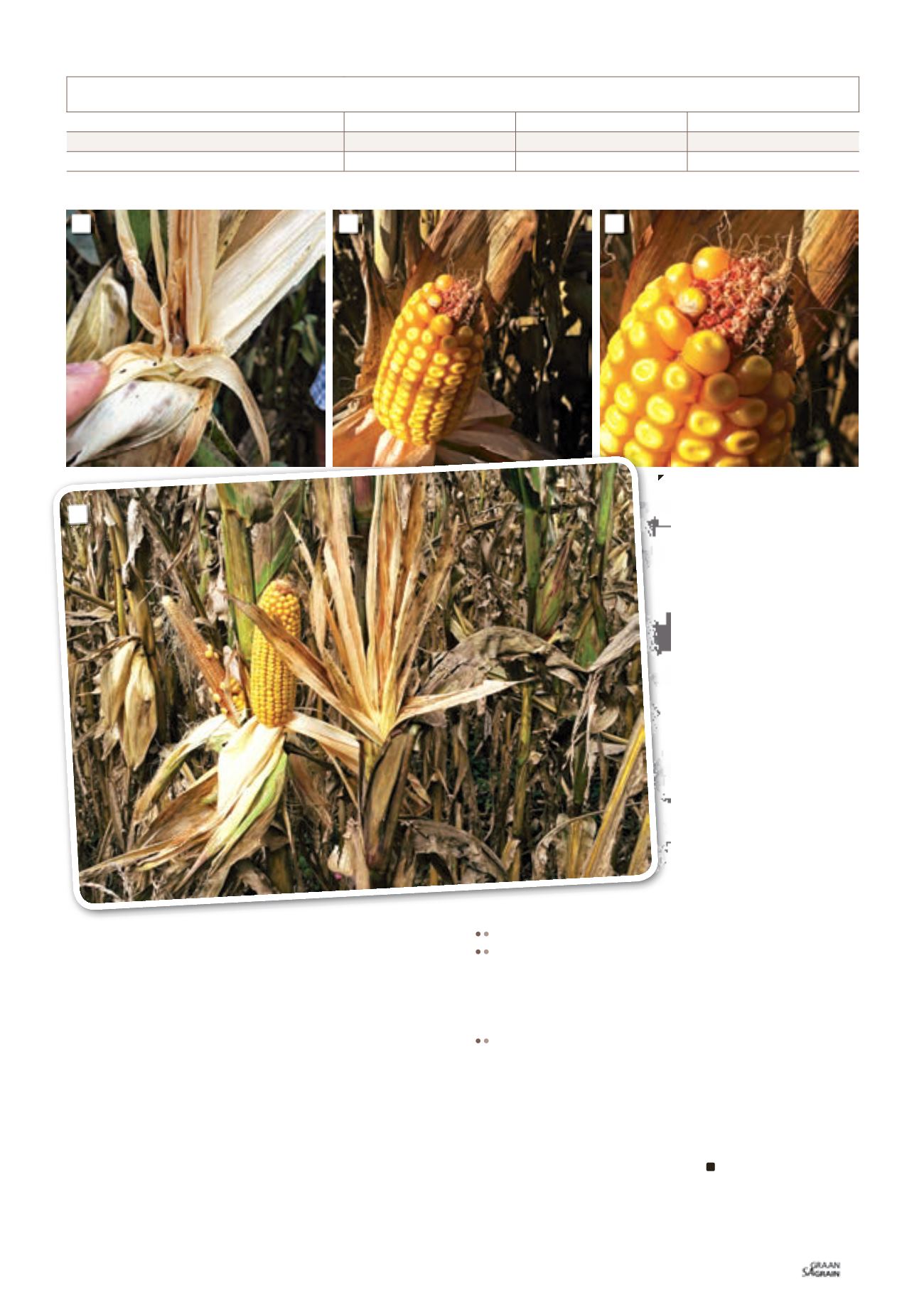

79
August 2015
TREATMENT
GRAIN MOISTURE (%)
YIELD (BUSHEL/ACRE)
DIFFERENCE ACROSS
TREATMENTS (BU/A)
Control (unsprayed)
28
215
6 Oz Headline
®
@ V14 (fungicide)
29,1
225
10
NIS 1 pint /100 @ V14 (non-ionic surfactant)
29,6
165
-50
TABLE 1: RESULTS OBTAINED BY BECK’S SEED AGRONOMISTS COMPARING THE EFFECT ON YIELD OF SPRAY TREATMENTS COMPARED TO
AN UNSPRAYED CONTROL.
Source:
Beck’s practical farm research book
, 2011
In 2009, agronomists from Beck’s Seed (USA) also successfully
performed a demonstration to illustrate this effect of non-ionic
surfactant applications increasing the incidence of arrested ear
syndrome. In their demonstration, the crop protection spray was
also applied at V14.
Table 1
shows the difference obtained by
Beck’s Seed.
Although the extracts from the two reports mentioned above tend
to indicate that applying crop protection sprays at certain plant
growth stages can cause arrested ear syndrome, plenty of lands
have received this treatment with no report of ill effects.
The current understanding of arrested ear syndrome is not com-
plete, and it is most likely caused by interactions between a
myriad of variables and stresses, particularly cold stress, impact-
ing the maize plant. The vast majority of these variables are be-
yond our control.
With this in mind, the following advice is proposed to help reduce
the risk of arrested ear syndrome:
Abide rigorously to crop protection chemical labels.
Avoid, as far as possible, any sprays between V10 to VT growth
stages of the maize plant. If a spray is vital within this window,
apply only the chemical required for the intervention. Do not
include additional adjuvants or extra crop protection chemicals/
foliar fertilisers to the spray mix.
Avoid spraying crops that are under climatic (particularly cold)
stress.
A final thought: Crop protection chemicals, by design, are applied
to protect the crop and maintain its yield potential and can there-
fore be construed as a good thing, however the old adage “You
can’t get too much of a good thing,” does not necessarily apply in
this instance and moderation is advised.
Further reading
www.agry.purdue.edu/ext/corn/news/articles.08/ArrestedEars-1209.html https://www.extension.purdue.edu/extmedia/BP/BP-85-W.pdfPhoto 1a, 1b, 1c and 1d are showing
the effect of and various degrees of
ear arrest resulting from arrested
ear syndrome. In Photo 1a the ear
has arrested completely and is
undeveloped. Photo 1b has partial
arrest. The base of the ear is normal,
but the top two thirds of the ear are
absent. Note the arrested primor-
dial remnant on the tip of the ear in
1b. Photo 1c shows a close up of this
remnant ear tip. Photo 1d shows
an array of arrested ear syndrome
symptoms observed in a land – from
almost normal ears to cobs without
kernels to complete arrest.
1a
1d
1b
1c

















